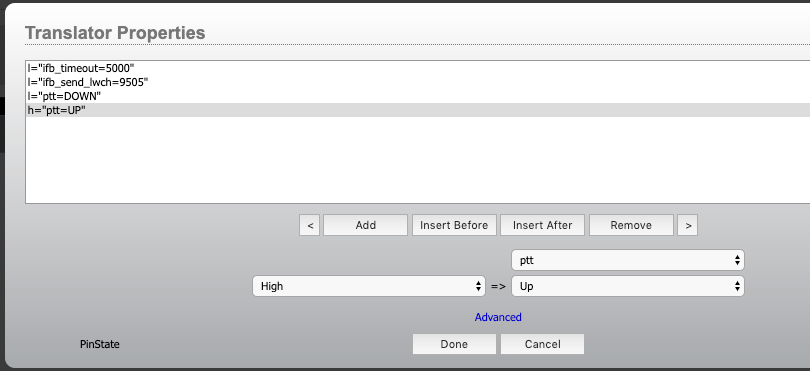Using Pathfinder to trigger TalkBack in a Fusion or Element console remotely
There are several properties in Pathfinder Core PRO related to this and some nuances around using them correctly. We will describe the specifics below.
The possible commands that get sent between Pathfinder and the Element/Fusion look like:
--> SET FaCH#1 ptt=[DOWN,9505,5000]
<-- EVENT FaCH#1 ifb_lwch=9505,ptt=DOWN
--> SET FaCH#1 ptt=[UP]
<-- EVENT FaCH#1 ifb_lwch=0,ptt=UP
Using the LwCH (Livewire channel, as opposed to FaCH) to select the fader with a specific livewire channel assigned is also acceptable. The parameters of the command are UP or DOWN for engaging or disengaging the IFB and the Livewire channel number to use as well as a timeout value in milliseconds.
These are represented in PathfinderCore PRO as a set of properties in the FaCH and/or LwCH objects in the logic flows property selection:
- ifb_send_lwch – Livewire channel number to send when ptt is down
- ifb_timeout – timeout to send when ptt is set Down
- ifb_lwch – ReadOnly response of the ifb_lwch property when ptt is engaged
- ptt – Push-to-talk - valid values are DOWN/UP
It is imperative to note some anomalies regarding how these properties work. First, the Element/Fusion only responds to the ptt command on the client that made the request. Other servers connected to the Element/Fusion will not know that an IFB is engaged. Second, there is no way to store the ifb channel and timeout values to use between ptt actions. Therefore, it is essential to set all three properties whenever you engage the IFB with a logic flow. You accomplish this by using an Object Translator instead of a Property Translator.
As an example, create a Logic Flow where the start point is a GPI and the endpoint is a FaCH (Fader Channel) object.

Select the whole FaCH object, not an individual property in the object as shown in this graphic.

Next set the translation list to look like this;

In this example when the GPI goes low, three properties will be set on this particular Fusion fader. Those are, ifb_timeout, ifb_send_lwch, and ptt. The order is important. Always set the ptt after the other two properties in the list. Finally, when the GRI goes high, we set ptt UP. This allows the Logic Flow to set all necessary properties in one block and do them in an explicit order.

